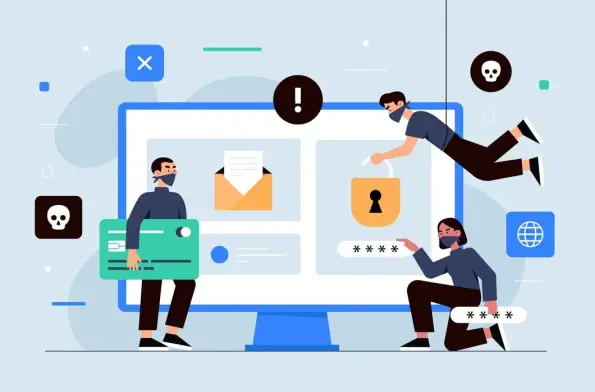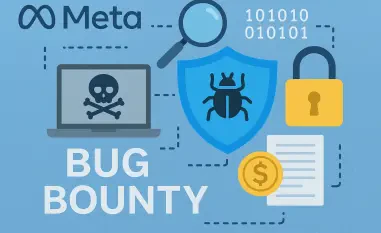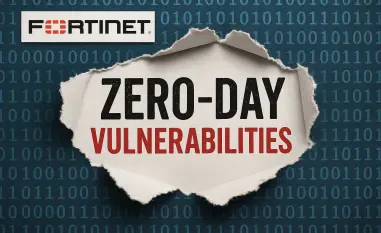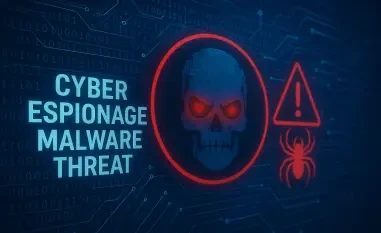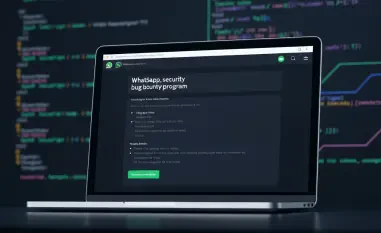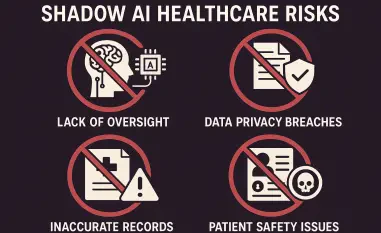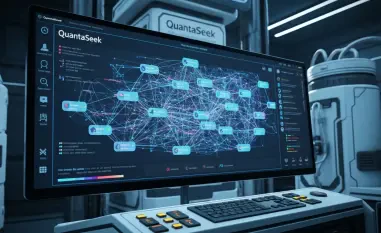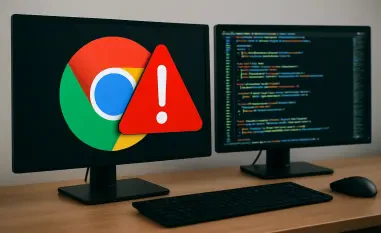Imagine a world where a single click on a seemingly harmless email could compromise an entire organization’s data, drain personal bank accounts, or expose sensitive information to malicious actors, creating widespread chaos and loss. This is the stark reality of phishing threats in 2025, as cyberattacks grow more sophisticated and pervasive across the globe. With France, the UK, and the United States at the forefront of this battle, the cybersecurity landscape reveals a troubling mix of advanced threats fueled by artificial intelligence (AI) and persistent human error. This industry report dives into the escalating phishing crisis, examines vulnerabilities and behavioral trends, and highlights the slow but promising adoption of resistant tools that could turn the tide against digital deception.
Understanding the Phishing Threat Landscape
Phishing attacks have emerged as a dominant cybersecurity challenge worldwide, with France, the UK, and the United States experiencing significant spikes in both frequency and impact. These attacks, often delivered through deceptive emails or fraudulent websites, target individuals and organizations alike, leading to data breaches, financial losses, and reputational damage. Recent data indicates that phishing remains a primary entry point for cybercriminals, outpacing other threats due to its low cost and high success rate.
The scale of this issue cannot be overstated, as millions of users fall victim annually, often unaware of the risks until it’s too late. In these key regions, the economic toll is staggering, with businesses losing billions to stolen credentials and ransomware deployed via phishing schemes. A survey conducted by Yubico, a leader in hardware-based authentication solutions, underscores the pervasive vulnerability, revealing critical gaps in user awareness and organizational defenses.
Technological advancements, particularly AI, have amplified the danger by enabling attackers to craft highly personalized and convincing phishing messages. At the same time, there is growing momentum in adopting phishing-resistant tools like multi-factor authentication (MFA) and security keys, offering a glimmer of hope. This dual dynamic of escalating threats and emerging solutions sets the stage for a deeper exploration of the current cybersecurity environment.
Trends and Vulnerabilities in Phishing Attacks
Sophistication of Phishing Techniques
The evolution of phishing techniques has reached new heights, with attackers leveraging AI to create emails and messages that are nearly indistinguishable from legitimate communications. Unlike earlier methods that relied on obvious grammatical errors or generic content, modern phishing exploits human psychology, mimicking trusted sources with alarming precision. This shift has made it increasingly difficult for even tech-savvy individuals to spot fraudulent attempts.
Survey findings paint a concerning picture: 44% of respondents across multiple countries admitted to interacting with phishing content in the past year, whether by clicking suspicious links or downloading malicious attachments. More alarmingly, over half either mistook these messages for authentic communications or expressed uncertainty, highlighting a critical weakness in human judgment over technical safeguards. This trend is especially pronounced in regions like Japan and Sweden, where fears about AI-driven phishing have surged dramatically.
The implications are clear—attackers no longer need to exploit software flaws when they can manipulate trust and urgency so effectively. As AI continues to refine these deceptive tactics, the line between real and fake communications blurs further, demanding more robust defenses and heightened vigilance from users everywhere.
Demographic and Behavioral Insights
Diving into demographic patterns, certain groups appear more susceptible to phishing scams, with Gen Z standing out as particularly vulnerable. A striking 62% of this younger cohort reported engaging with phishing content in the past year, a rate far higher than other age demographics. This heightened exposure may stem from greater online activity and a tendency to trust digital interactions more readily.
Yet, the struggle to identify phishing attempts transcends age barriers, as detection challenges persist across all generations. Data shows minimal variation in the ability to recognize fraudulent messages, pointing to a universal gap in practical skills despite varying levels of awareness. This shared difficulty suggests that the issue lies not in exposure alone but in the deceptive nature of modern attacks that exploit common behavioral tendencies.
Behavioral insights further reveal a disconnect between knowing the risks and taking effective action. Many users understand the danger of phishing but lack the tools or training to respond appropriately, often falling back on familiar but risky habits like reusing passwords. Addressing this gap requires targeted education that goes beyond mere warnings to build actionable skills for identifying and avoiding digital traps.
Challenges in Cybersecurity Practices
The cybersecurity landscape remains plagued by outdated practices, with an over-reliance on passwords despite their well-documented vulnerabilities. Even as users and organizations acknowledge the insecurity of single-factor authentication, it continues to dominate as the primary method for securing both personal and professional accounts. This stubborn adherence to flawed systems creates a wide-open door for phishing attacks.
At the organizational level, complacency exacerbates the problem, as less than half of companies enforce MFA across all applications. Additionally, 40% of employees report receiving no formal cybersecurity training, leaving them ill-equipped to recognize or respond to threats. Such gaps in corporate policy and preparedness amplify the risk, especially when phishing serves as a gateway to broader network breaches.
On an individual level, similar shortcomings persist, with nearly a third of users neglecting MFA for critical personal accounts like online banking. This widespread inaction, despite known dangers, reflects a troubling inertia that hinders progress toward stronger security. Bridging this divide will require not only accessible tools but also a cultural shift to prioritize proactive measures over reactive fixes, possibly through incentives or mandatory standards.
Regional Progress and Regulatory Implications
Amid the challenges, certain regions are making notable strides in combating phishing threats, with France leading the way in MFA adoption for personal accounts. From a modest base in recent years, usage has soared to 71% in 2025, signaling a rapid embrace of secure login practices among individuals. This leap suggests that focused awareness campaigns and accessible solutions can drive meaningful change when prioritized.
In the UK and the United States, confidence in phishing-resistant technologies such as security keys and passkeys is also gaining ground. Users increasingly view these hardware-based options as the most reliable defense against credential theft, spurred by growing recognition of password limitations. This shift, though gradual, marks a promising trend toward building a more resilient digital ecosystem in these countries.
Regulatory frameworks play a pivotal role in shaping these advancements, as compliance requirements often push organizations to adopt MFA and other safeguards. However, regional disparities in policy enforcement and public awareness influence the pace of change, with some areas lagging due to inconsistent standards. Strengthening cybersecurity regulations and harmonizing best practices across borders could accelerate the widespread uptake of resistant tools, ensuring broader protection against evolving threats.
Future Outlook for Phishing Resistance
Looking ahead, the cybersecurity industry stands at a crossroads, with a gradual transition toward phishing-resistant solutions like MFA and hardware-based authentication offering a path forward. These tools, designed to thwart even the most sophisticated attacks, are gaining traction as viable alternatives to traditional passwords. Their adoption, while still uneven, points to a future where credential theft becomes significantly harder for attackers to execute.
Emerging technologies also hold potential to disrupt phishing strategies, from biometric authentication to AI-driven threat detection that can identify anomalies in real time. However, these innovations must contend with the parallel rise of AI-enhanced attacks, which continue to evolve in complexity. Balancing defensive advancements with the pace of offensive tactics will be crucial to maintaining an edge in this ongoing arms race.
Consumer trust in advanced tools, alongside economic factors, will shape the trajectory of cybersecurity investments. As global conditions influence budget allocations, the challenge lies in ensuring that cost does not hinder access to cutting-edge solutions. Sustained innovation, coupled with comprehensive education initiatives, remains essential to drive adoption and empower users to navigate an increasingly treacherous digital landscape.
Conclusion and Call to Action
Reflecting on the insights gathered, it becomes evident that phishing threats have reached unprecedented levels of sophistication, exploiting human error and outdated practices with devastating effect. The persistent reliance on passwords and inadequate training has left both individuals and organizations vulnerable, while demographic vulnerabilities, particularly among younger users, underscore the universal challenge of detection.
Yet, amidst these struggles, positive developments have emerged, with regions like France showcasing remarkable progress in MFA adoption and growing trust in resistant tools in the UK and US. To build on this momentum, stakeholders must prioritize the rapid deployment of modern authentication methods, integrating hardware-based solutions as standard practice. Governments and industry leaders should collaborate to establish stricter regulations and fund accessible training programs, ensuring no user is left behind.
Looking to the future, the focus must shift to fostering a culture of proactive security, where innovation and awareness work hand in hand to outpace evolving threats. By investing in scalable, user-friendly tools and championing global cooperation, the digital world can be fortified against phishing’s relentless advance, safeguarding data and trust for generations to come.
